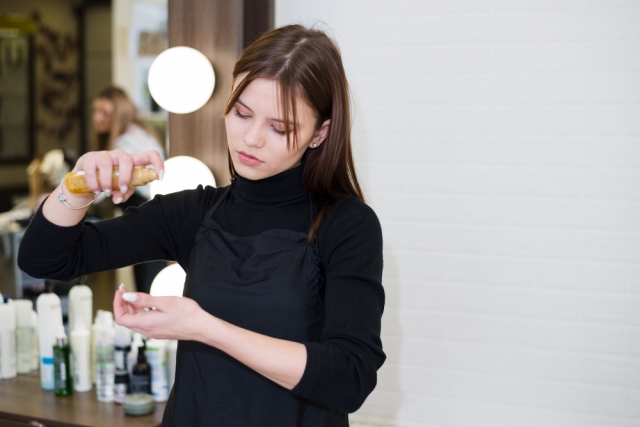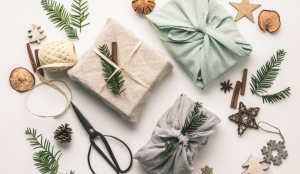You have a unique scent in your memory, a story you want to tell through fragrance. But turning that idea into a physical product can feel complex and overwhelming.
It doesn't have to be. The journey from a concept to a customer is a clear, step-by-step process, so let's walk through the essentials to build your brand from the ground up.
The Blueprint for Your Brand
1. Define Your Brand Soul
Before you think about scents or bottles, you need to define your why. What is your brand's core story?
Is it about sustainable luxury, playful self-expression, or nostalgic comfort? This story is your anchor, and it will guide every decision you make, from the ingredients you choose to the marketing you create.
2. Find Your Unique Market Position
The fragrance market is crowded, so you must find a way to stand out. You don't have to compete with giant luxury houses; many new brands succeed by finding a specific niche.
Your unique selling proposition (USP) is what sets you apart.
a. Unique Ingredients
This could mean focusing on rare, ethically sourced, or local ingredients. A brand built around sustainable vanilla from a specific region or a unique local flower has an immediate, built-in story that larger brands can't easily duplicate.
b. A Niche Focus
You might create "functional fragrances" designed to enhance a mood, like calm, energy, or focus. Alternatively, you could target a specific, underserved demographic, such as by offering a fully certified Halal or 100% vegan line.
c. Personalization
This is a strong angle that offers a bespoke experience. This could range from simple "scent layering" kits to a full customization service where customers can co-create a fragrance that feels uniquely their own.
For example, in a booming market like Indonesia, local brands are thriving by blending global aesthetics with local stories and materials. This strategy creates an authentic connection that global brands can't easily replicate.
3. Develop Your Signature Scents
This is the heart of your product. While you'll need to understand the basics of olfactive families (like floral, woody, oriental) and perfume structure (top, middle, and base notes), you likely won't do this alone.
This is the stage where you partner with expert perfumers or a specialized manufacturing facility. Our advice is to start small. Focus on launching a cohesive collection of 3-5 "hero" scents that perfectly capture your brand's story.
4. Set Your Pricing Strategy
Your price tells a story about your quality and position in the market. Setting it too low can make your product feel cheap, while setting it too high can alienate your target customer.
Research is key, so look at what your direct competitors are charging. In many markets, a new "mass-premium" segment is emerging.
This is the sweet spot between cheap body mists and expensive luxury imports. For instance, top-selling local brands in Indonesia have found success by pricing their products in an accessible range (roughly $13 to $25), offering a premium experience without the luxury price tag.
|
Market Segment |
Price Range (USD Equivalent) |
Example Brands |
|
Mass-Premium (Local) |
$13.00 - $25.00 |
HMNS, SAFF & Co., Mykonos |
|
International Luxury |
$160.00 - $400.00+ |
Dior, Tom Ford, YSL |
This table shows a clear gap and opportunity, which likely exists in your own market as well.
From Concept to Tangible Product
1. Navigate the Legal Essentials
This is the most critical and often most intimidating step. To protect your brand and legally sell your products, several key legal milestones are non-negotiable.
a. Establish Your Business
First, you must form a legal business entity, such as an LLC, CV, or PT, depending on your country's regulations. This formal structure is your foundation; it separates your personal liability and is a prerequisite for opening business bank accounts and signing contracts.
b. Register Your Trademark
Next, you must register your brand name and logo with your country's intellectual property office. This step is non-negotiable for protecting your brand from copycats and securing your identity in the marketplace for the long term.
c. Get Product Compliance
All cosmetics, including perfume, must be registered with a national regulatory body (like BPOM in Indonesia or the FDA in the US). This process ensures your product is safe for consumers, and you cannot legally sell anything without this official certification.
This entire legal process can be long and complex, often taking months to complete.
2. Choose Your Production Path
You have two main choices for making your product. The first is the "DIY" route, which involves building your own factory, massive upfront costs, high risk, and deep technical expertise.
The second, and much smarter path for new brands, is to partner with a private label perfume manufacturer (often called "maklon"). A good manufacturing partner is more than a factory; they are a business incubator.
They will handle the complex parts for you, including R&D, sourcing, and managing the difficult legal registration. This model dramatically lowers your financial risk.
Many partners now offer low Minimum Order Quantities (MOQs), allowing you to launch with a small, affordable batch, test the market, and scale intelligently.
3. Design Your Packaging
Your bottle and box are the first things a customer will physically experience, so the design must communicate your brand's soul in an instant.
You can consider current trends like minimalism, artistic designs, or sustainable, refillable bottles. Premium touches like magnetic caps, foil stamping, or velvet inserts can also create a memorable unboxing experience.
You will need to find suppliers for these materials, though a good manufacturing partner will often handle this sourcing for you as part of their service.
Launching and Growing Your Brand
1. Build Your Digital-First Launch
You don't need a physical retail store to start. A Direct-to-Consumer (D2C) model, where you sell directly to customers through your own website and social media, is the most powerful way to launch.
This approach gives you full control over your brand story, higher profit margins, and a direct line of communication with your customers.
2. Master E-Commerce Marketplaces
While your own site is your home, you need to be where people are already shopping. Platforms like Shopee and Tokopedia in Asia, or Amazon in other parts of the world, are massive discovery engines.
Use these marketplaces to drive volume and get your brand in front of millions of potential buyers, as this is a core sales strategy for many new brands.
3. Create a Community Not Just Customers
This is the final and most important piece: don't just run ads; build a loyal community. A great way to start is by partnering with micro-influencers who have an authentic, trusting relationship with their followers, focusing on real stories instead of just one-off paid posts.
Engage with every comment, ask questions, and be transparent. This active engagement builds loyalty and powerful word-of-mouth that money can't buy.
Launching a perfume brand is a journey of both passion and precision. It's a process that turns a personal story into a legal entity, a chemical formula, and ultimately, a digital community.
While it is complex, by taking it one step at a time, your unique idea can become a brand that people truly connect with and love.






